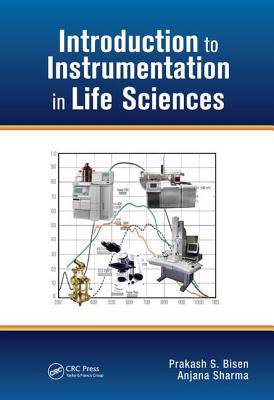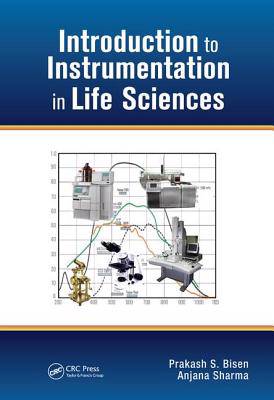
- Afhalen na 1 uur in een winkel met voorraad
- Gratis thuislevering in België vanaf € 30
- Ruim aanbod met 7 miljoen producten
- Afhalen na 1 uur in een winkel met voorraad
- Gratis thuislevering in België vanaf € 30
- Ruim aanbod met 7 miljoen producten
Introduction to Instrumentation in Life Sciences
Prakash Singh Bisen, Anjana Sharma
Hardcover | Engels
€ 256,95
+ 513 punten
Uitvoering
Omschrijving
Instrumentation is central to the study of physiology and genetics in living organisms, especially at the molecular level. Numerous techniques have been developed to address this in various biological disciplines, creating a need to understand the physical principles involved in the operation of research instruments and the parameters required in using them. Introduction to Instrumentation in Life Sciences fills this need by addressing different aspects of tools that hold the keys to cutting-edge research and innovative applications, from basic techniques to advanced instrumentation. The text describes all topics so even beginners can easily understand the theoretical and practical aspects.Comprehensive chapters encompass well-defined methodology that describes the instruments and their corresponding applications in different scientific fields. The book covers optical and electron microscopy; micrometry, especially in microbial taxonomy; pH meters and oxygen electrodes; chromatography for separation and purification of products from complex mixtures; spectroscopic and spectrophotometric techniques to determine structure and function of biomolecules; preparative and analytical centrifugation; electrophoretic techniques; x-ray microanalysis including crystallography; applications of radioactivity, including autoradiography and radioimmunoassays; and fermentation technology and subsequent separation of products of interest.The book is designed to serve a wide range of students and researchers in diversified fields of life sciences: pharmacy, biotechnology, microbiology, biochemistry, and environmental sciences. It introduces different aspects of basic experimental methods and instrumentation. The book is unique in its broad subject coverage, incorporating fundamental techniques as well as applications of modern molecular and proteomic tools that are the basis for state-of-the-art research. The text emphasizes techniques encountered b
Specificaties
Betrokkenen
- Auteur(s):
- Uitgeverij:
Inhoud
- Aantal bladzijden:
- 384
- Taal:
- Engels
Eigenschappen
- Productcode (EAN):
- 9781138440708
- Verschijningsdatum:
- 27/07/2017
- Uitvoering:
- Hardcover
- Formaat:
- Genaaid
- Afmetingen:
- 178 mm x 254 mm
- Gewicht:
- 869 g

Alleen bij Standaard Boekhandel
+ 513 punten op je klantenkaart van Standaard Boekhandel
Beoordelingen
We publiceren alleen reviews die voldoen aan de voorwaarden voor reviews. Bekijk onze voorwaarden voor reviews.










